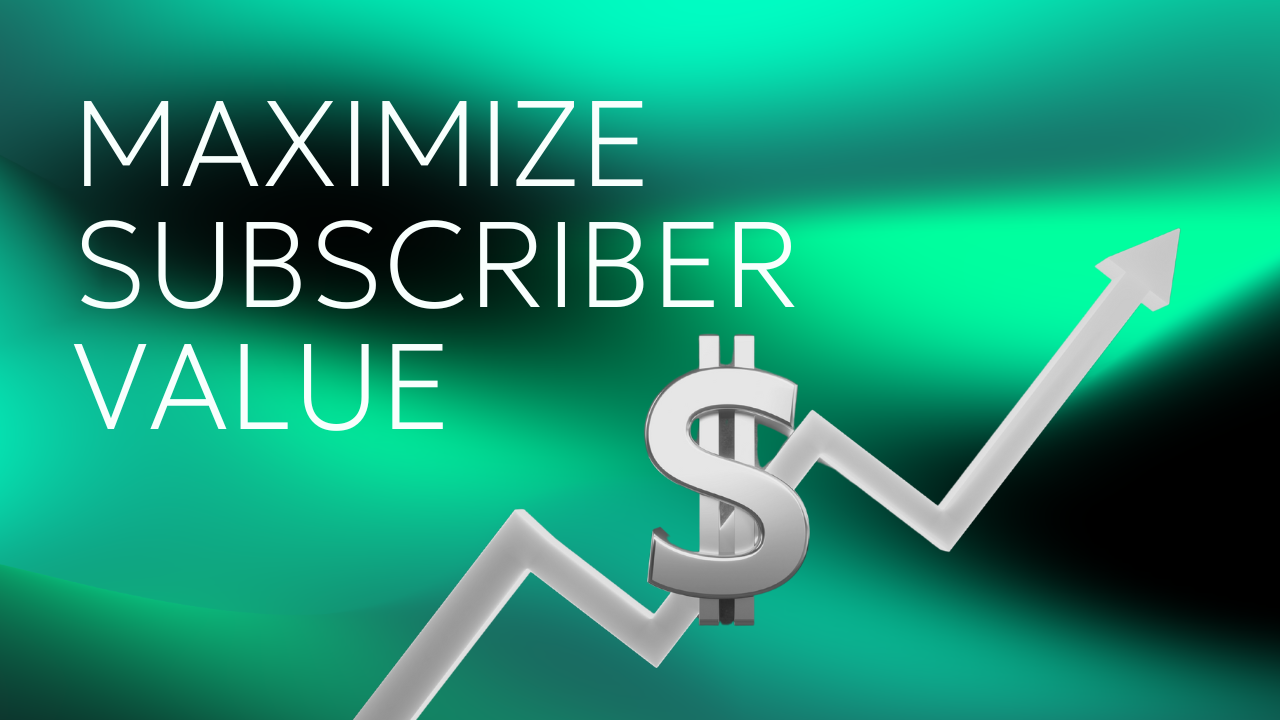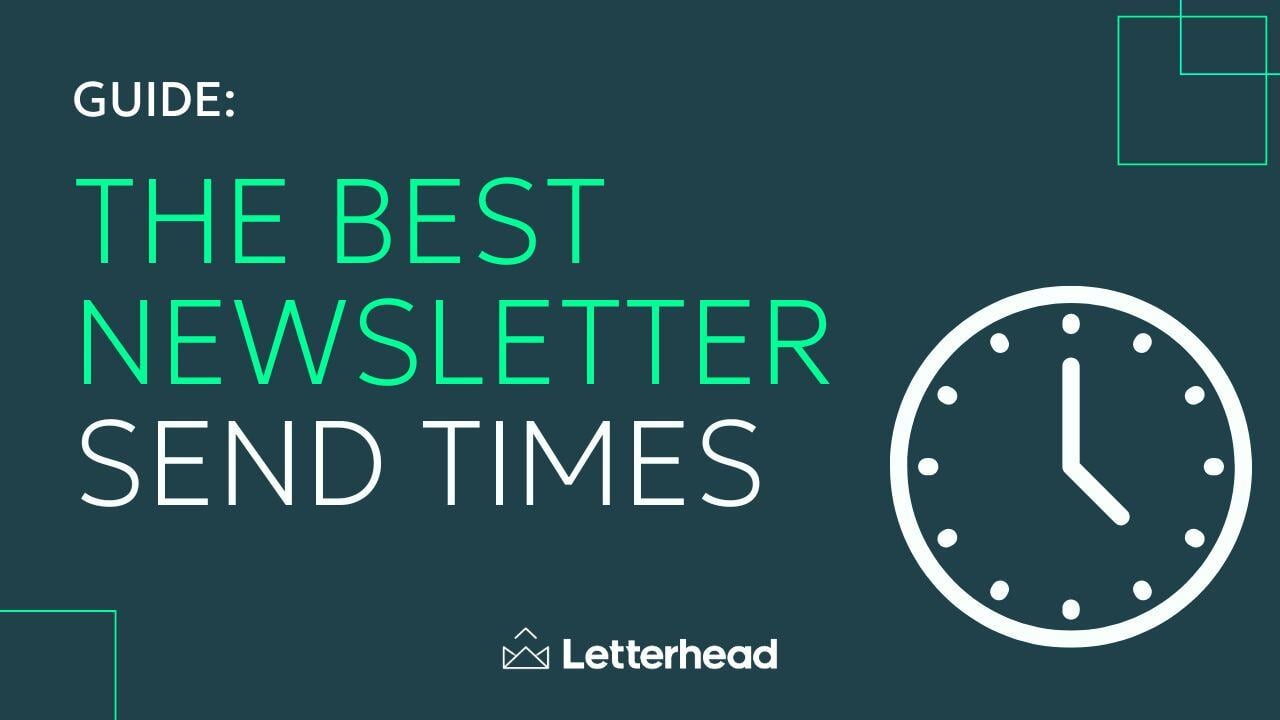16 Strategies to Increase Newsletter Engagement (With Examples)
Newsletter engagement can mean a few different things:
- Opens
- Clicks
- Sales
- Ad revenue
- Email replies
- Interaction with polls, quizzes, and surveys
No matter how big your subscriber base or how many newsletters you run, increasing any or all of those numbers is always a good thing.
Think about it in the context of the old marketing axiom:
There are two ways to increase sales: get more customers or sell more to the ones you already have. The latter is almost universally the cheaper and easier option.
Getting new subscribers to your list takes time, money, and effort. However, a simple change to an email sent to 50k people can improve engagement and, therefore, the overall value of your list!
Let’s dive into the best ways to do this.
16 Effective Ways to Increase Newsletter Engagement
It's always a good thing when your subscribers take action to engage with your brand. Here are some of the best ways to drive those actions.
1. Polls/Surveys/Quizzes
Your readers are interested in your niche, and many fancy themselves experts. In many cases, they won’t resist the chance to answer trivia. Here’s an example from Enjoy Basketball, who uses these in every issue:
While surveys may not have the same “I want to see if I’m smart” allure, many readers will take them because they like your newsletter and are willing to help out with something simple.
Here’s The Hustle sharing results the day after they surveyed their subscribers:
2. Ask for Replies
At the end of your email, simply ask for them to hit “reply” to answer a question or give their response to a position you took in the email.
Of course, this works better for smaller newsletters where you can reply individually, but it’s still doable for larger ones. You could have someone on your team send a canned thank you message to everyone who messaged.
3. Social Media Buttons
Will this radically increase your business? No.
Will some people click your social media links and become more engaged than others? Yes.
Even the New York Times, owners of the largest newsletter in the world (The Morning) put social share buttons at the bottom of each email.
It’s easy enough that you might as well do it.
4. Send at a Consistent Day and Time
People who follow James Clear’s 1-2-3 newsletter know that he sends just once a week, but it’s always on Thursday.
That dependability likely increases opens because a subset of his subscribers anxiously awaits those Thursday send times.
Newsletters that send each morning have trained their readers to check in first thing, essentially becoming as regular a part of their morning as a cup of coffee.
5. Send at Optimum Times
While there isn’t one universally accepted time as being the best, here’s what studies conducted by a few email platforms revealed:
|
Brand |
Result |
|
Thursday 8 AM - 9 AM |
|
|
Tuesday 9 AM - 12 AM |
|
|
Tuesday & Friday at 2 PM, 5 PM, & 8 PM |
|
|
Tuesday 1 PM EST |
|
|
Tuesday - Thursday 10 AM |
|
|
Thursday, then Monday, 11 AM - 12 PM |
If it makes sense for your newsletter, aim to send during popular windows to get the most engagement.
6. Direct to Other Content
While lots of subscribers enjoy newsletters because they’re self-contained (i.e., readers don’t have to click out of it to get value), some will certainly consume other types of content you make.
If you have a podcast, YouTube channel, or a blog, link to those occasionally for increased opportunities for your best subscribers to engage further.
7. Reach Out to Individual Subscribers
If you have 100k subscribers, you might feel like it doesn’t matter if you talk to 10. However, this can give you unparalleled insight into what they’re looking for. You can specifically ask them how else they would be interested in engaging with you.
In addition, you can reach out to those who regularly interact and respond to get good feedback and help them feel closer to your brand. This can be particularly effective if your business model is to maintain a small yet highly engaged/profitable list—such as CEOs or a high-level mastermind group.
8. Have a Controversial Opinion
People online love to tell other people how wrong they are. Or, they love to read people who confirm an off-the-wall opinion they have.
However, be careful with this, as you still want to keep your credibility. Ensure you can back up your opinion with logic or data, and that it’s rooted in some form of reality.
For example, if you say the sun revolves around the Earth, you’ll likely lose most of your readers.
9. Improve Your Writing
Newsletter creators don’t need to be Pulitizer-level writers or A+ copywriters, but it does help to write in a way people enjoy.
Here are a few quick ways to level up your writing:
- Write to a 7th-grade level audience (even if your audience is hyper-intelligent. It’s just easier to consume, no matter how smart you are).
- Create shorter sentences and paragraphs.
- Stay on topic.
- Download Grammarly to help you correct your punctuation and grammar (even the free version is pretty darn helpful).
- Cut unnecessary words, phrases, or sentences.
In addition, keep reading your favorite writers (especially newsletter creators) and figuring out why you like them.
But probably the most important thing is to start writing and don’t stop.
10. Be Personal
While not all brands benefit from this (such as 1440), sharing about yourself as it relates to your industry helps draw people to you.
For example, Alex Mathers from Untethered Mind has built a nice subscriber base sharing about overcoming mental limits. He frames most of his writing in the context of his own life:
He’s relatable, but also provides legitimate ways to improve. That’s a great formula for creating an engaged audience.
Even if you’re a big brand sharing the news, you can still find ways to be human. For example, Morning Brew (one of the largest in the world) still has a fun opening with personality and then names the writers:
11. Use Concrete Facts, Reports, and Case Studies
Continuing with the theme of improving your writing, one of the best ways to do that is to be concrete.
For example, rather than say “Sitting is bad for you,” take the extra step to say “According to a study performed by UCSD, people who sit 11+ hours a day were 57% more likely to die than those who sit less than 9.5 hours.”
It only takes a minute to find that information, but it makes your writing more informative, credible, and interesting.
12. Use Visuals
Now, if you can take concrete data or trends and put them into a chart or graph, you’re really going to have engaged subscribers.
Here’s a simple example from the History Facts newsletter:
Your visuals don’t need to be custom, either. Often, you can find someone else who’s created one and link to it, or find stock images to offset your text.
13. Require Double Opt-In
Double opt-in is when you require subscribers to click a confirmation link in your email before they’re added to your list.
According to a study (see what I’m doing here?) by GetResponse, double opt-in subscribers open emails 30% more and click 75% more than single opt-in subscribers!
14. Re-Send to Unopens
This one can help you with your most basic of engagement stats: opens.
Most ESPs make it simple to see a list of your subscribers who didn’t open your newsletter. Try sending it again the next day to that list of those who didn’t open and try a different subject line.
Sure, this doesn’t work if you’re a daily newsletter—you’d rather just send your new edition—but a once or twice a week publication can see increased opens with this strategy.
15. Improve Deliverability
Odds are, you’ve nailed the technical framework for email sending, so we’ll skip those for now. However, there are a few ongoing practices that can help get more of your emails delivered to inboxes:
- Clean your list regularly and ruthlessly.
- Send fewer emails to subscribers who haven’t opened in the past week or two (this works better for newsletters that are sent 5+ times per week).
- Use a service that monitors your emails and overall sender reputation, such as SendForensics or MXToolbox.
16. Use an ESP Designed for Newsletters
While all email service providers can be used to send out a newsletter, not all are optimized to do it well.
Letterhead was designed for serious newsletter creators who want to grow and scale. With tools to help find and place curated content, a user-friendly newsletter builder, and options for automatic ad placement, you can send out great newsletters faster than you thought possible.a
Schedule a time and let’s chat about how Letterhead can help you scale your newsletter business.


